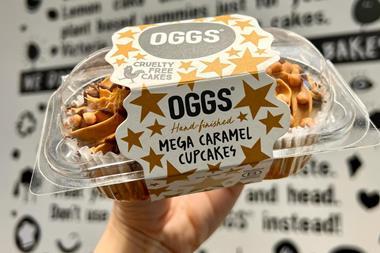
If United Biscuits and Moy Park get away their planned IPOs, they will represent the biggest food producers to list in the UK for the best part of a decade.
The Grocer this week revealed that both companies have drawn up plans to float on the London Stock Exchange before the end of the year.
A host of companies – including Quorn, Weetabix, Findus, R&R and Valeo Foods – are rumoured to be jostling in their slipstream, waiting for the first big supplier to list before enacting their own IPO plans.
So are we on the verge of a food company IPO flurry? Potentially. But life, and the financial market, is rarely that simple.
The first point in the plus column is that investor demand for new issues seems to still be there. After the glut of retail IPOs investors were said to be suffering from ‘IPO indigestion’ towards the end of the first half of the year, but the reality is that fund managers still have plenty of money to put to work for the right company.
The more pertinent question is whether there’s appetite for food stocks specifically. According to some, food is “particularly attractive at the moment” and there is “structural demand for more exposure to the sector”.
Others are less convinced. One banking source said the food companies were gearing up to come to market just as investors were moving away from defensive stocks. Their view is that the market gets excited over growth stories – mature food businesses are solid with fairly unspectacular revenues growth and are unlikely to get the heart racing.
Undoubtedly Cranswick and Greencore are trading at attractive multiples – Cranswick is at 14.5x estimated 2014 earnings, while Greencore has a forecast P/E ratio of around 16x. These look like valuations that no strategic buyer would pay.
But on the other side of the argument, Premier Foods has had a fairly horrific run on the public markets over the past few years – its current forecast 2014 P/E ratio is down at below 4% and the shares have lost 65% since the start of the year.
Nonetheless, Cranswick and Greencore seem to suggest that the appetite is there for strong names with a good strategic story. But whether these initial food IPOs create a slipstream for other food producers depends on a number of factors.
Most obviously, how UB and Moy Park are received will be crucial. A large proportion of the plethora of retail floats earlier this year quickly started trading down after launch, which rapidly diminished the appetite of fund managers who were sitting on losses from their investments. High-quality companies like Poundland and B&M Bargains could still get successful floats away at the back end of the first half, but many more were faced with the choice of pricing at the bottom end of their range or pulling their IPOs entirely.
Secondly, the prospects for food floats perhaps depends more on what happens in the general IPO market than it does on UB, Moy Park or any other individual grocery float. The IPO market made a comeback in the first half, but it remains a fragile recovery. It would probably only take a couple of non-grocery related IPOs to receive a poor market reception for the entire pipeline of prospective floats to be brought down in their wake.
There is still money there, but the market is skittish and it won’t take much of a shock to block the growing pipeline completely.
As one City source noted: “I wouldn’t be surprised if there’s a huge queue of food manufacturers wanting to list, but the vast majority won’t get away as there simply isn’t the capacity”.
It may well be that those that come to market first could benefit from a first-mover premium. The question now is who will be brave enough to test that theory out.















No comments yet